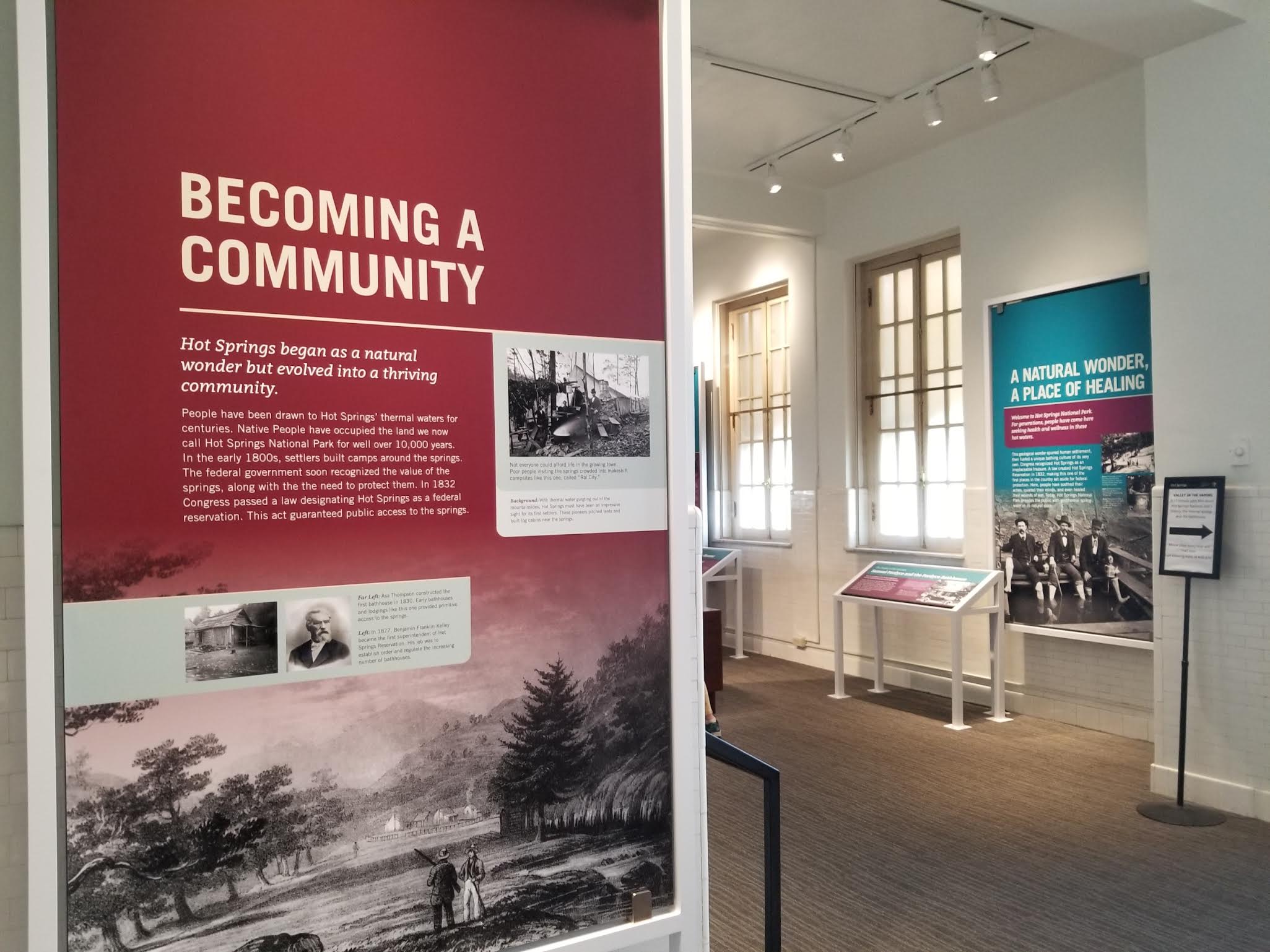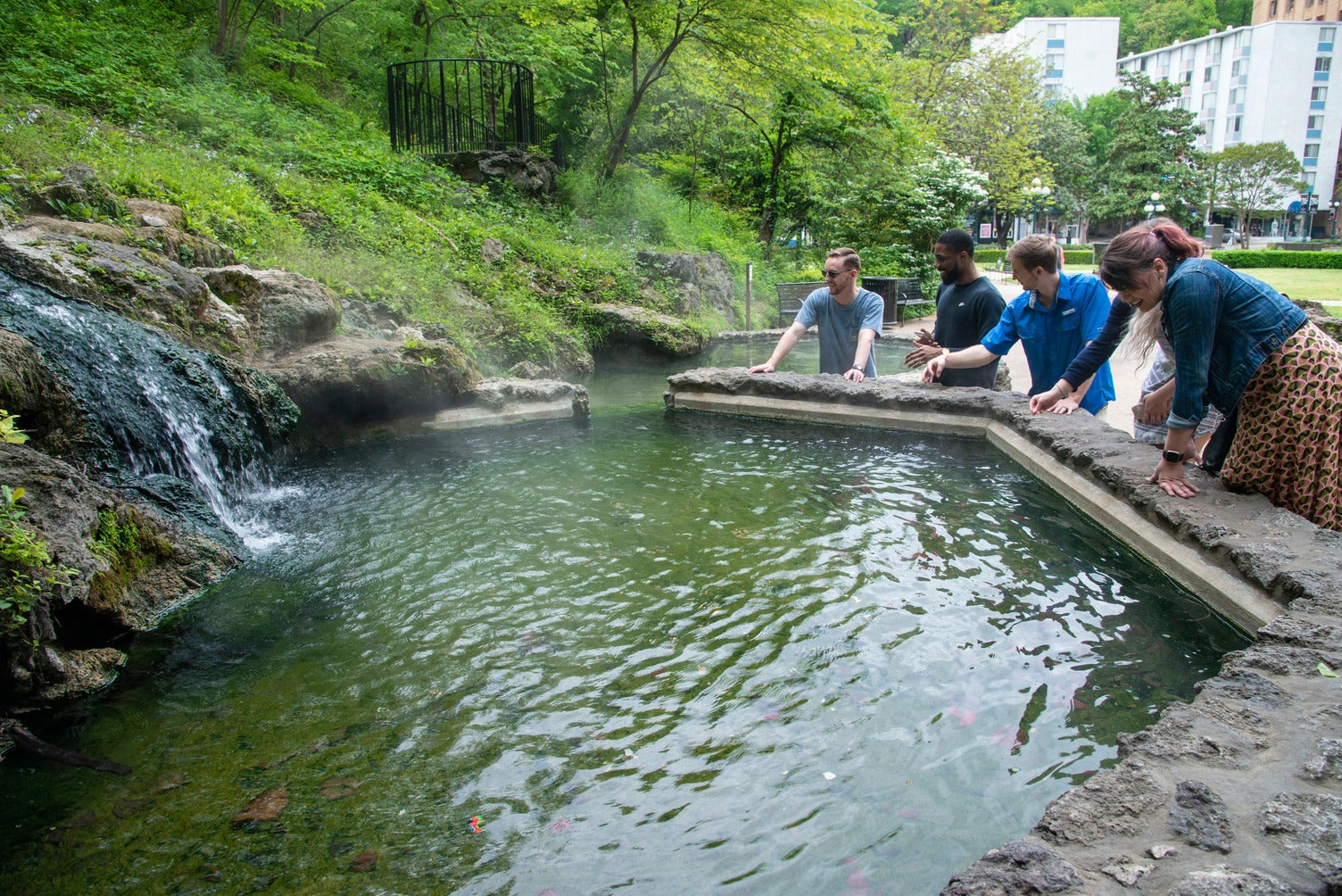The healing waters of Hot Springs
Hot Springs is well-known for the spring waters it is named after. The thermal water has been a beacon for the area for a long time. The springs became protected by the federal government when the area they were on became a reservation in 1832. This date stands out as it pre-dates the nation’s first national park and National Park Service. The area then became a national park in 1921 making Hot Springs National Park among the oldest federally protected areas in the entire NPS system.
The first bathing facilities utilizing the waters were pretty primitive, basically tents that were put up over the springs. By the early 1900s, Hot Springs was a famous health destination where thermal baths and steam treatments were popular. Samuel Fordyce, who built the Fordyce Bathhouse, first came to the area seeking relief for his Civil War injuries.
You can read more about the interesting history of Bathhouse Row at Hot Springs National Park here and here.
By the 1950s and 60s bathing for health reasons declined due to the use of antibiotics changing medical practices. However the popularity of the area’s spring waters is still thriving to this day.
The exhibits at the Fordyce Bathhouse, which is now a museum and the national park's visitor center, are a great destination to learn about the park and the area's healing waters. The park also has events to teach about the famous water including the annual Hot Springs Water Festival.

The water found here is quite rare due to an unusual set of geologic conditions created and maintained by the Ouachita Mountains. To put this in perspective, the spring water starts out as rain falling on nearby mountains and takes about 4,400 years to travel about 6,000 feet deep into the Earth before reemerging at more than 40 springs.
The water of the park has minerals in it that includes small amounts of silica, calcium, magnesium, potassium and sodium. The national park is famous for thermal water but it has cold springs as well. Today, visitors can taste the famous spring water via one of the various jug fountains located around the park.
Visitors to the park can see a prime example of a spring at the Hot Water Cascade at Arlington Lawn. Most of the park’s springs are sealed for their protection. Visitors continue to come to this national park to soak in the famous thermal waters. Two bathhouses, the Buckstaff Bathhouse and Quapaw on Bathhouse Row still provide spa treatments with the thermal waters. The Superior Bathhouse Brewery currently makes its own brew on-site using thermal spring water as a main ingredient. It also was the first brewery inside a national park. The Hale Bathhouse is now a boutique hotel called Hotel Hale that has thermal mineral water soaking tubs in their rooms.

For further spa options with thermal waters, check out this article.
Another tie to the history of healing waters can be found at Lake Ouachita State Park. The practice of using healing waters was popular in the mid-1800s, making Hot Springs a nationally popular health resort. Drinking and bathing in the area’s mineral waters was long held to have curing abilities. Other springs developed in the area, including Three Sisters Springs, which you can see and learn more about at Lake Ouachita State Park. This area once housed a resort where people stayed and used the springs in an effort to help cure ailments.

The history of Hot Springs healing water is an interesting one. For a more in-depth peek, be sure to visit the Fordyce at Hot Springs National Park and check out the exhibits there.
